Top 10 beyond visual range fighter aircraft 2018: selection process and the science of BVR combat
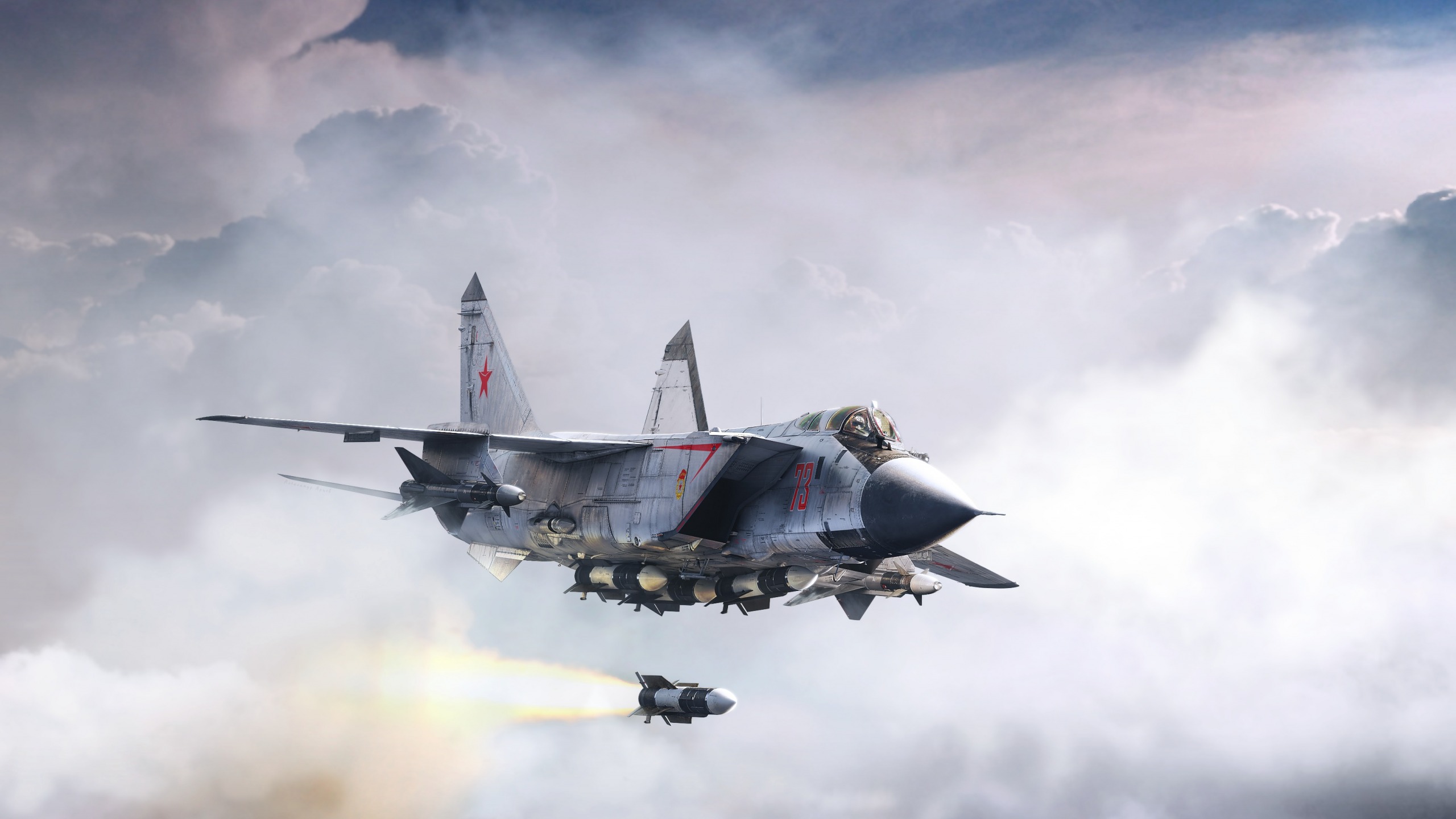 ‘The Infinity of Lists’ by Umberto Eco is book that covers the topic of lists. Examples cited in the book range from Hesiod‘s list of the progeny of gods to Rabelais’ list of bottom-wipes. Listing, the compulsive mind’s attempt to impose order on a chaotic universe is everywhere, and is especially popular on the odious and wonderful thing you’re now using, the internet.
The top ten format of ‘listicle’ has long haunted the internet, leading me to take the rather lazy step of adopting it for this blog. Since this site started five years ago I’ve created a bunch of top 10s, ranging from the predictable (like the ‘Best fighters of World Two‘) to the deliberately silly (Top ten pusher aircraft, allegedly- but not actually – written by Werner Herzog). The furious responses the selections generated is both puzzling and to be expected. It’s odd in that you wouldn’t expect anyone to believe that reality actually conforms to a ‘top ten’ approach, and predictable in that the articles are intended to provoke debate; in some cases we have made deliberately contentious choices in our top 10s to catalyse such responses. Curiously, the fact that these articles could be said to trivialise or possibly celebrate war machines by using a format conceived for promoting pop music has not provoked any response.
Which, almost, neatly brings us to the Top 10 BVR fighters. BVR may be a daunting term, but simply stands for ‘beyond visual range’. Our top 10 is an attempt to choose the ten fighters that are best at shooting down other aircraft at ranges where the pilot cannot see the opponent with his or her eyes. That I decided to separate the aircraft into within-visual range (WVR) and BVR categories is a completely artificial device, but I hope, an interesting way to consider their relative merits. Each time I have assembled this annual list I have quizzed experts in the field (though many, including Jim Smith, may not self identify as such) to help me reach my conclusions. Jim Smith had significant technical roles in the development of the UK’s leading military aviation programmes. From ASRAAM and Nimrod, to the JSF and Eurofighter Typhoon. When I asked him to order operational fighter aircraft in a top 10, he asked me to consider the nature of BVR combat and sub-categories within it. As his answers were fascinating in themselves, I have presented them here as a teaser preceding the sharing of our top 10 BVR fighters of 2018. Over to Jim….
‘The Infinity of Lists’ by Umberto Eco is book that covers the topic of lists. Examples cited in the book range from Hesiod‘s list of the progeny of gods to Rabelais’ list of bottom-wipes. Listing, the compulsive mind’s attempt to impose order on a chaotic universe is everywhere, and is especially popular on the odious and wonderful thing you’re now using, the internet.
The top ten format of ‘listicle’ has long haunted the internet, leading me to take the rather lazy step of adopting it for this blog. Since this site started five years ago I’ve created a bunch of top 10s, ranging from the predictable (like the ‘Best fighters of World Two‘) to the deliberately silly (Top ten pusher aircraft, allegedly- but not actually – written by Werner Herzog). The furious responses the selections generated is both puzzling and to be expected. It’s odd in that you wouldn’t expect anyone to believe that reality actually conforms to a ‘top ten’ approach, and predictable in that the articles are intended to provoke debate; in some cases we have made deliberately contentious choices in our top 10s to catalyse such responses. Curiously, the fact that these articles could be said to trivialise or possibly celebrate war machines by using a format conceived for promoting pop music has not provoked any response.
Which, almost, neatly brings us to the Top 10 BVR fighters. BVR may be a daunting term, but simply stands for ‘beyond visual range’. Our top 10 is an attempt to choose the ten fighters that are best at shooting down other aircraft at ranges where the pilot cannot see the opponent with his or her eyes. That I decided to separate the aircraft into within-visual range (WVR) and BVR categories is a completely artificial device, but I hope, an interesting way to consider their relative merits. Each time I have assembled this annual list I have quizzed experts in the field (though many, including Jim Smith, may not self identify as such) to help me reach my conclusions. Jim Smith had significant technical roles in the development of the UK’s leading military aviation programmes. From ASRAAM and Nimrod, to the JSF and Eurofighter Typhoon. When I asked him to order operational fighter aircraft in a top 10, he asked me to consider the nature of BVR combat and sub-categories within it. As his answers were fascinating in themselves, I have presented them here as a teaser preceding the sharing of our top 10 BVR fighters of 2018. Over to Jim….


BVR Fighter Assessment
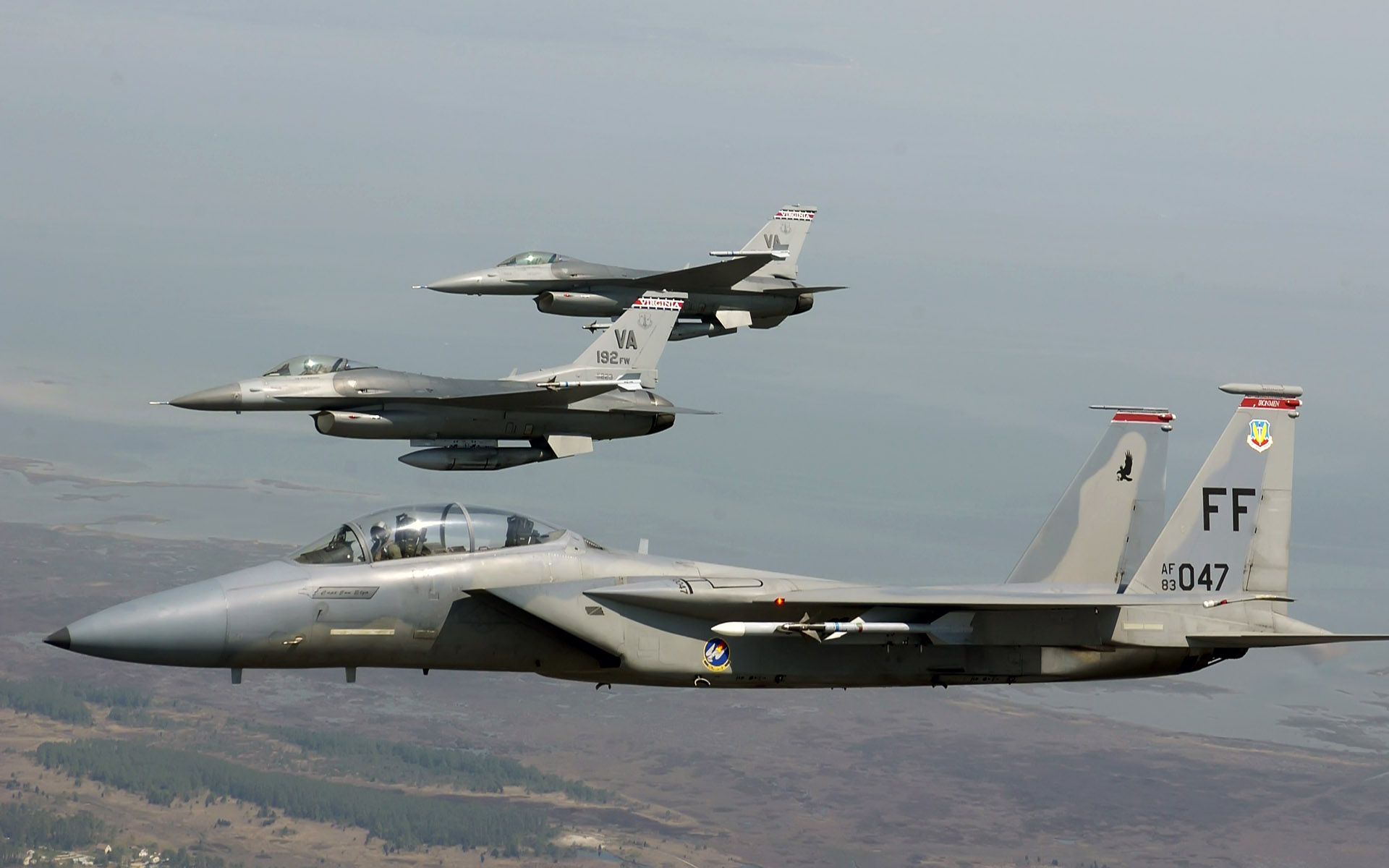
OVER VIRGINIA — An F-15 Eagle is joined in formation by F-16 Fighting Falcons during a training sortie here April 19. The F-15 is assigned to the 71st Fighter Squadron at Langley Air Force Base, Va., and the F-16 is assigned to the Virginia Air National Guard’s 192nd Fighter Wing in Richmond. (U.S. Air Force photo by Tech. Sgt. Ben Bloker)
I am going to start by considering what is different about BVR combat, and what system characteristics are needed to succeed? From there, I’ll go on to examine whether the scenario or setting for the air combat makes a difference to the system requirements, and then have a go at ranking aircraft in different scenarios.
I’ll leave it to you, to draw on your sources on the current state of development of the various systems. Were I to attempt this, I’d need to be aware of material I certainly could not bring to this forum.
What is required to deliver a BVR air combat capability?
Here’s how I look at BVR as a capability:
The 4 things you need to achieve, all in the context of survival, are:
Locate the target
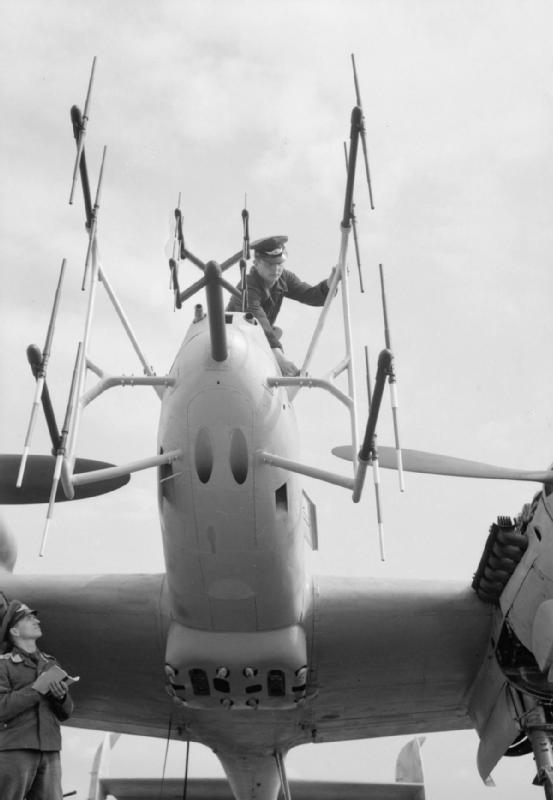
– at a sufficient distance to be able to decide what to do
– preferably without being detected yourself
These two elements of locate then push you towards platforms that
– have powerful on-board detection systems, such as Electronically-scanned radars, big radars, Low Probability of Exploitation (LPE) radars, and Infra-Red Seeker Trackers (IRST)
– and/or operate in a well-integrated system of systems, with datalink support, off-board and third-party sensors
– and may be supported by other systems countering opposition sensors, including surface and airborne radars
– and/or can operate with stealth including secure LPE communications and datalinks
As a consequence of the above, interoperability becomes important, as third parties may be providing target information, datalinks, tankers and logistics. This drives towards
– compatible secure communications, IFF, tanker/refuelling systems, in turn requiring
– trusted information sharing protocols and procedures between coalition allies
or the alternative approach of a self-sufficient integrated air defence system (e.g. Russia, China, Sweden)
Engage and defeat the target

Outside the opposition’s ability to engage effectively, and ideally inside your missile no escape zone
This drives you towards
– long range missiles such as Meteor
– Third-party support, including targeting and datalink support

Disengage at will
This is to allow you to either re-position for another engagement, or to withdraw
This favours
– Platforms with high energy manoeuvrability
– or all aspect stealth (generally not both high energy manoeuvrability and stealth, at least without compromise e.g in number of weapons carried)
– AESA radar to allow high-off boresight datalinks
– or third-party datalinks
Repeat as necessary
This requires the ability to
– carry enough weapons
– have good combat persistence
– and, often ignored, have sufficient availability and numbers to deliver a campaign rather than just an engagement
What does this imply for the top ten candidates ?
Situational awareness, weapons capability and combat persistence are probably more important than manoeuvre capability (g), although transonic and supersonic acceleration is helpful in creating opportunities to survive/win multiple engagements.
Situational awareness (SA) is vital because Beyond Visual Range (BVR) combat, by definition, precludes visual identification of opposing systems. Electronic systems must be used instead, and so on-board and off-board radars and electronic surveillance and protection measures become very important.
There is also the interaction between SA and stealth. If you have a stealthy airframe (F-22, F-35 for example) there are likely to be big benefits in the engaging fighters running in passive and using third-party sensors to set up the engagement. If you don’t do this your stealth advantage evaporates, as the opposition knows where you are.
If you are not very stealthy, and if your primary concern is to knock down enemy strike aircraft and bombers. what you want is a very long-range missile with a large no escape zone, like Meteor. This allows you to stand off outside the kill zone of the opposition.

Another big issue is the effectiveness of any detection technologies against stealthy aircraft. Ground-based multi-static radars; lower frequency radars; AESA radars and IR Seeker Trackers will all have some capability. And who knows whether means exist of exploiting the LPE radars and comms. systems of stealthy aircraft. Once missiles are deployed, other detection opportunities may exist, including increases in signature as weapons are deployed; launch detection; detection of the missile plume etc.
Then you have the problem of numbers, closely connected to the number of BVR weapons carried, and the effectiveness of those weapons in a modern counter-measures environment. Not to mention tactics … and whether multiple engagements will be required.
Good things to have:
1) Situational Awareness
Active Electronically-Scanned Array (AESA) radars are better than Passively Scanned Arrays; either of these is better than mechanically scanned radar
Off-board sensors able to provide big picture good; better still if 3rd party targeting available.
2) Low observability
But caution if this means less weapons; less platform performance; less persistence and need for 3rd party EW to avoid compromising LO by transmitting
3) High-capability weapons
Long-range, high-speed, large No Escape Zone
High resistance to countermeasures
More than 2 BVR shots (ideally)
4) Sufficient combat fuel available
To take advantage of the weapons load out
5) Good energy manoeuvrability
To engage and dis-engage at will
To rapidly accelerate to maximise weapon effectiveness
6) Good EW and countermeasures available
To decrease opposition situational awareness and increase survivability.
Scenarios and broader requirements

One of the key problems to be addressed is ‘what is the scenario?’ And are other attributes also required?
What about considering 2 different views of BVR combat – Air Superiority, where the battle is taken to the opposition, and Air Defence, where the focus is on deterring and preventing incursion.
Starting with Air Defence, let’s suppose you have a small-ish nation, where the Government does not have global dominance in its agenda. For such a nation, the key aim is deterrence, ensuring that any country wishing to invade or dominate you cannot easily do so. For such a nation, Gripen/Meteor might be the ultimate air defender, especially if you have a well-integrated air defence system and dispersed bases. Never being far from the border or a base, fuel volume and even weapons load don’t matter so much, because you’ll scoot back to your cave and re-arm/refuel. Having a big stick, however, is great, because you can defeat threats while keeping out of their missile range.
On the other hand, Air Defence of Russia drives you towards the MiG-31. You have to have a big, fast, aircraft because you can’t avoid the possibility of having to cover a fair distance at high speed to meet the threat. Being big means a big sensor and long-range weapons are available, and both are likely to be needed. You may be less concerned about signature and platform manoeuvrability because your ideal approach will be to stand back and hit bombers rather than engage fighters.
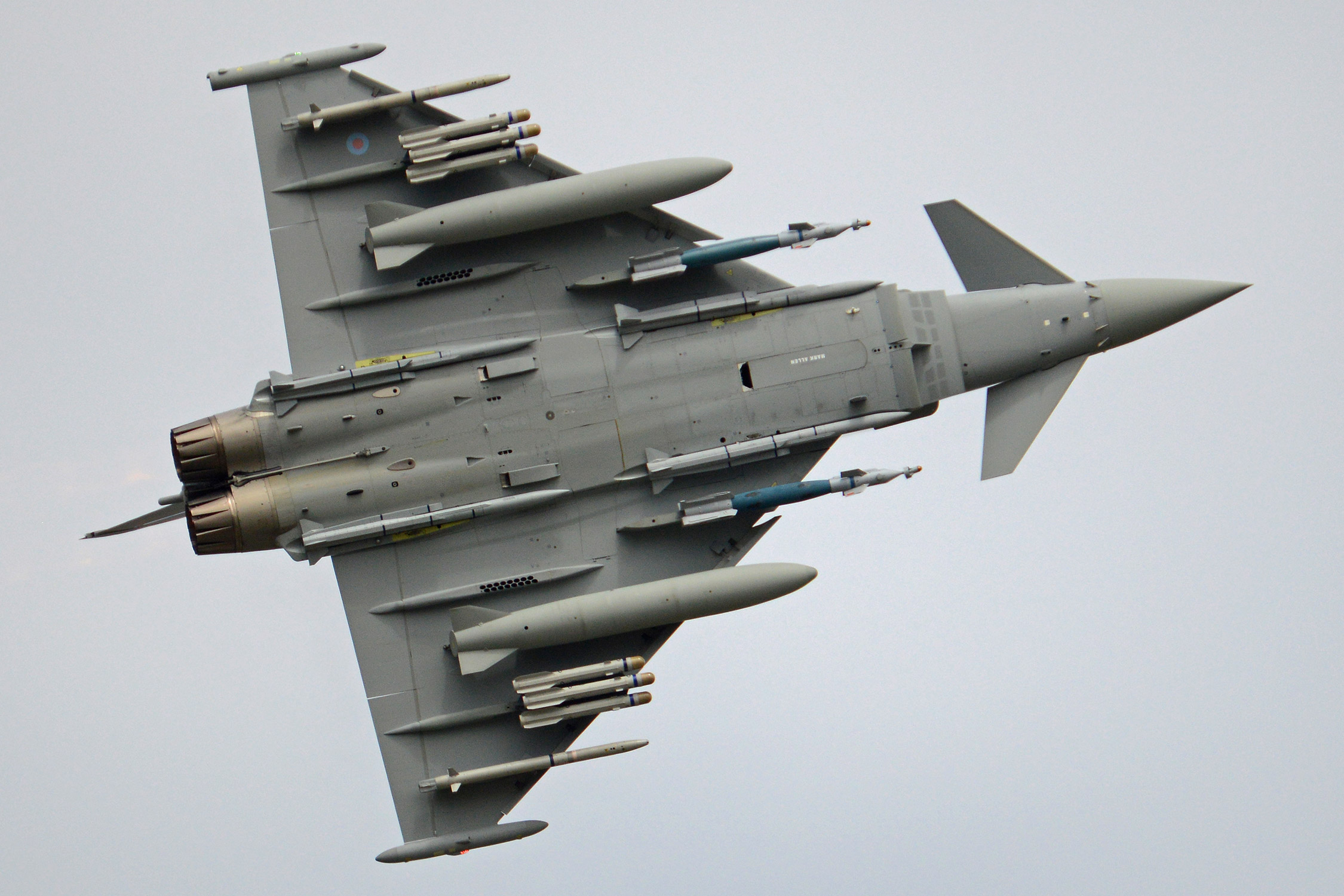 Air Superiority, or perhaps Air Superiority and Offensive Counter Air is a bit of a different proposition. A key difference is that you are seeking to dominate outside your borders (or your host Nation’s borders when deployed elsewhere). It helps to be big, because you can carry a lot of fuel to allow you to be a penetrating escort to strike packages. But it also helps to be stealthy to reduce your vulnerability to ground-based systems and air defence aircraft. And it may help to be really agile – if you are going to need to disengage and re-engage, for example, or against the contingency you get forced into WVR combat.
Air Superiority, or perhaps Air Superiority and Offensive Counter Air is a bit of a different proposition. A key difference is that you are seeking to dominate outside your borders (or your host Nation’s borders when deployed elsewhere). It helps to be big, because you can carry a lot of fuel to allow you to be a penetrating escort to strike packages. But it also helps to be stealthy to reduce your vulnerability to ground-based systems and air defence aircraft. And it may help to be really agile – if you are going to need to disengage and re-engage, for example, or against the contingency you get forced into WVR combat.
So F-22 should be excellent at most of this, but might lack a bit in the way of combat persistence. As an OCA adjunct, able to use surface weapons to hit radars, and anti-air weapons to counter opposition Air Defence aircraft, F-35 would be excellent, but perhaps best with its pal in the F-22 nearby to ensure the F-35s could stay out of WVR.
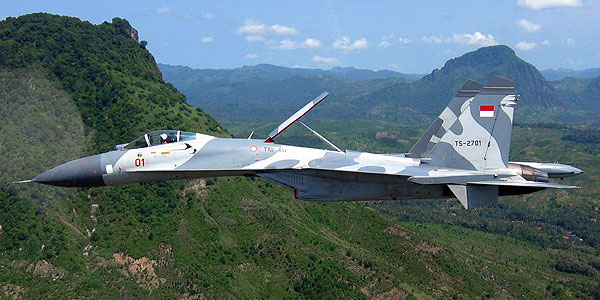
The Su-35 and Chinese derivatives would also be strong players here. These Su-27 developments have plenty of fuel, plenty of weapons and plenty of agility. In Air Superiority some of the older variants may be looking a bit dated, but their fuel capacity, general availability in significant numbers and weapons and EW capability mean that they could be quite challenging as escorts. I think the size is driven by the geographic challenge (like the MiG-31); once you’ve got the size, fuel weapons and agility the escort role is a natural. But signature differences would give an initial advantage to stealthier systems.
The strength of Rafale and Eurofighter is their ability to take different weapons loads so they can swing between the Air Superiority role at the start of a conflict (particularly once Meteor and AESA come along) and the OCA/strike role with an Air Defence capability once Air Superiority is established.
I’d expect China to be doing dome different things with the J-20. With a hypothetical really long-range anti-air weapon, this relatively stealthy platform could force essential support assets such as tankers and AEW platforms to stand back, reducing situational awareness and combat persistence for opposition aircraft. It might also be a deterrent to maritime operations if an air-surface strike weapon were to be available. Perhaps the J-20 should be thought of as a stealthy MiG-31, aimed at large area airspace denial rather than air superiority per se.
Broader requirements may also arise, particularly given the interplay between National aspirations, geography and budget. It is only the largest economic powerhouses with global aspirations that can afford optimised specialist solutions for Strategic Strike, Tactical Strike, Air Superiority and Air Defence.
As an example, due to its perceived role in regional security, the UK is looking to mush of its future air capability being delivered by a mix of Typhoon and JSF. Strategic strike would be delivered by other systems such as cruise missiles, and it appears Typhoon will swing between Air Superiority and Strike roles as required, while JSF provides a stealthy strike capability.
Making an Assessment
So, how to go about defining a Top Ten? A decision needs to be made about whether the Top Ten focuses solely on Air Superiority, or whether the flexibility of role, which may suit many Nations economically, is an additional measure. Further, where do the specialist Air Defence aircraft like MiG-31 and Gripen fit in? If the somewhat platform focussed approach of the 2017 list is followed these should do well, as with a long-range weapon either could be a very effective deterrent against a threat strike package.
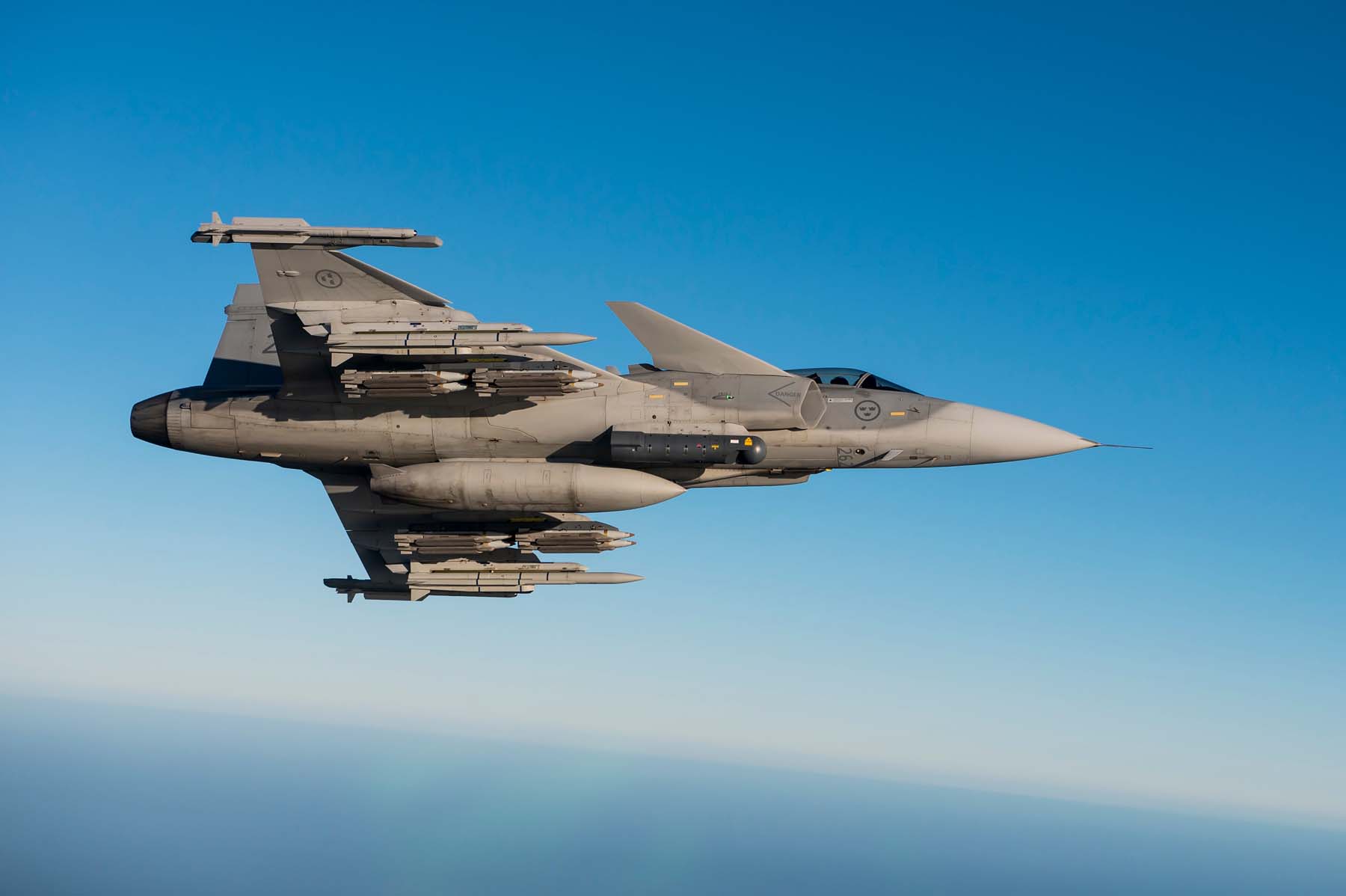
A Governmental approach to ranking these systems would be reliant on extensive system modelling, intelligence data, consideration of whole life costs and so on. Even them, great care would be required to ensure the modelling represented like with like – for example matching projected future capabilities against realistic projected threat capability rather than current capability.
None of these techniques are available to me, and if they were, I could not report the outcome! Instead the assessments below are judgement-based against various roles for which the candidate aircraft might be used.
Air superiority:
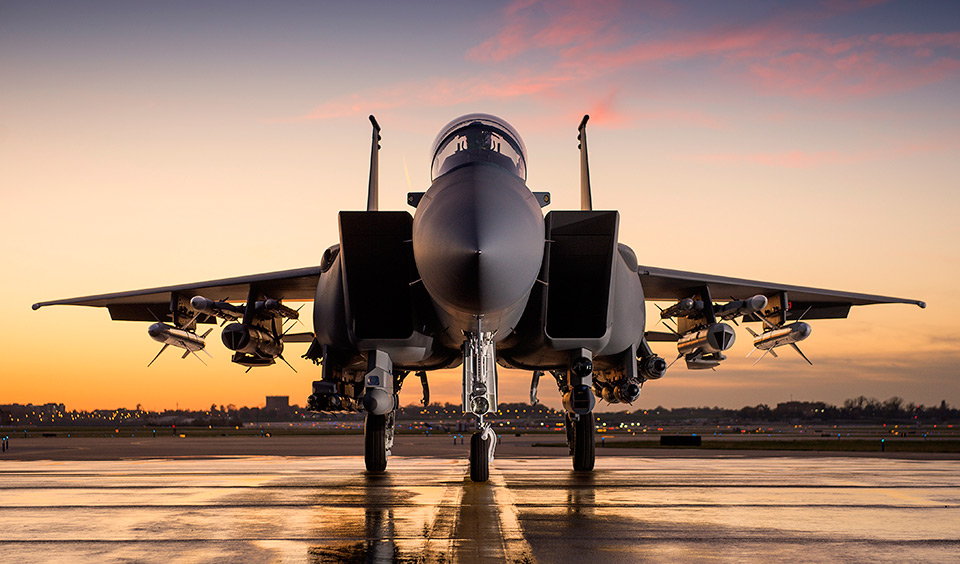
1: F-22
2: Typhoon and Rafale (once Meteor and AESA are integrated)
3: F-15 and Su-35 [I’d need to know more about these systems to separate them]
4. J-11, Su-30
Air Defence:
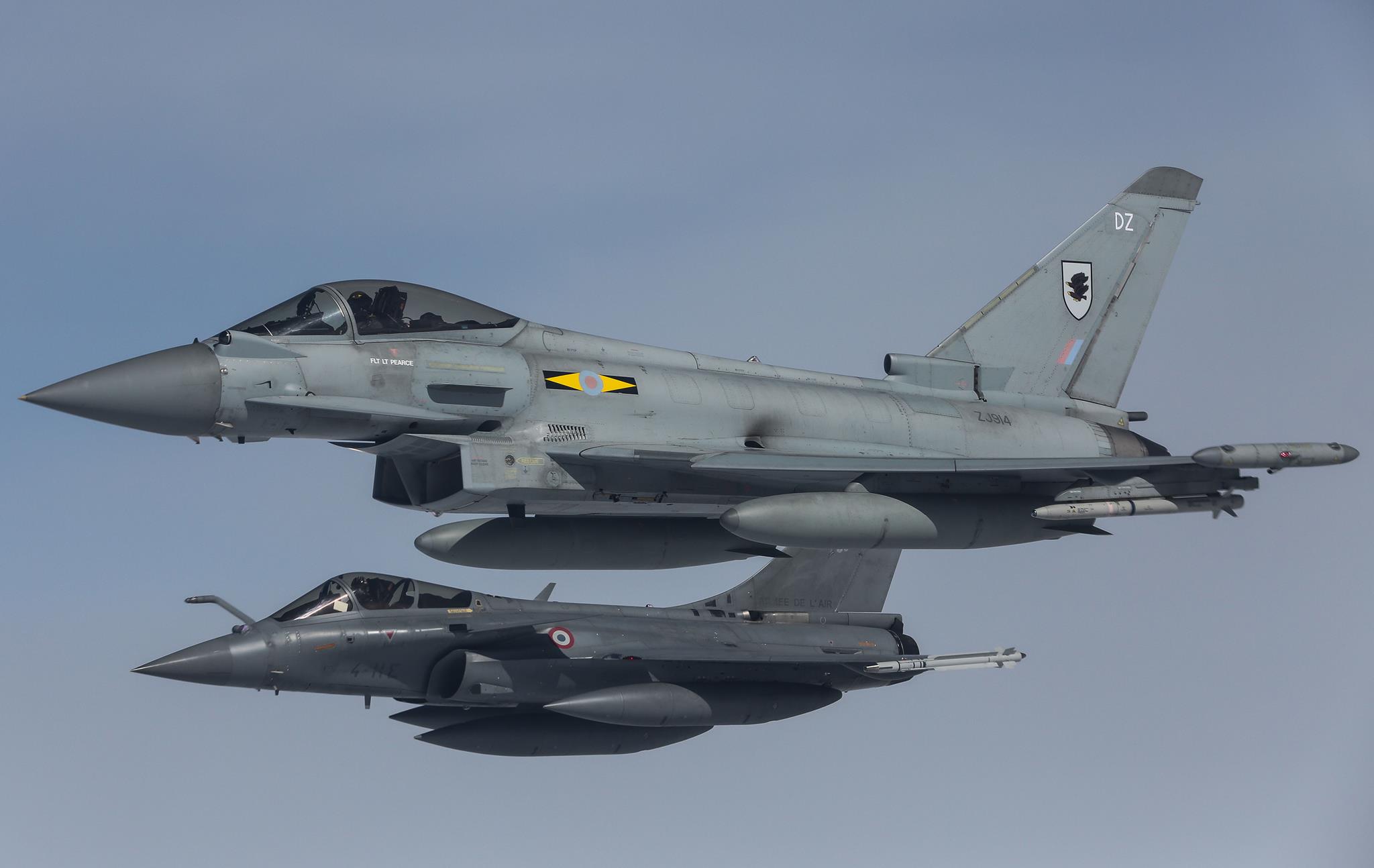
1: F-22 (but should be doing Air Superiority)
2: Gripen and MiG-31 – noting a limitation to Defence of the homeland
3: Typhoon and Rafale (with or without Meteor, but would be better with Meteor and would then place above Gripen)
4: F-15, Su-35, J-11, F-35 (unsure about where to place F-35; its lack of energy manoeuvrability and low number of long-range weapons is offset by stealth)
5: J-20 (likely to improve as system matures)
6: Su-30/ F-18E/F
Escort
1: F-22 (but should be doing Air Superiority)
2: Su-35/J-11/Su-30 (Primarily because of fuel capacity)
3: F-35 (self-escort role)
4: Typhoon/Rafale (with or without Meteor, but with Meteor would be better)
Offensive Counter Air/Strike

1: JSF (stealth, fuel)
2: Swing-role Typhoon and Rafale
3: J-20 as specialist AEW and tanker killer, and threat to maritime systems
4: F-18E/F
5: F-16
This excludes specific strike systems such as F-15E, Su-34
Taken overall, it depends what you are looking for. The best out-and-out BVR fighter is the F-22, and it would be good for Air Defence as well.
A champion all-round capability for a non-US, Western nation, would be Typhoon or Rafale plus JSF. For Russia or China, Su-35 plus MiG-31 or J-20 plus J-11, plus specialist strike aircraft
If your focus is only on defence, then F-22, Gripen, MiG-31 and perhaps J-20 are all strong.
If your budget is limited to one combat aircraft type and your geography is limited, Gripen would be excellent. If you have a large geographic area to manage Su-35, or F-35 with tanker support.
Jim’s opinions and observations will be used in the compilation of the top 10 BVR fighters of 2018 coming very soon to hushkit.net
Without the generosity of our readers we could not exist, please donate here. We are extremely grateful to all those who choose to donate. Recommended donation £11.


BVR lists aside, I have read the Herzog pusher list about a hundred times, mostly in times of personal weltschmerz. Will his writings ever revisit these pages?
Dear Stu, That’s a good idea! I’ll ask him.
India seems to be sufficiently there with planned 4++ procurement – Rafales with AESA and Meteors and upgraded ( Super Sukhoi) Su-30s plus the Tejas Mk.2 ( poor man’s Gripen) if it ever arrives and the 360 deg scanning Airbus330 based AEW…..just getting things from noble thought to practical action seems SO difficult 😀
as much as I love reading from this site, I still think that the author has a large misconception regarding the F-35’s ability to maneuver.
There have been numerous publications as of late that demonstrate the F-35’s maneuvering capabilities. And I think it is safe to say that they are not sub par.
No need to take my word for it as the publications speak for themselves.
http://nationalinterest.org/blog/the-buzz/new-report-details-what-31-us-air-force-pilots-who-flew-the-17266
https://nettsteder.regjeringen.no/kampfly/2016/09/16/lack-of-perfection-does-not-mean-disaster-how-i-read-test-reports-as-a-pilot/
here is one of the excerpts from the article
“When asked about my first flight in the F-35, I compared it to flying a Hornet (F/A-18), but with a turbo charged engine. I now can quote a USMC F/A-18 Weapons School Graduate after his first flight in the F-35: «It was like flying a Hornet with four engines!» (His point being that the F-35 can afford to operate at high Angle-of-Attack and low airspeed, but that it will regain the airspeed quickly when needed). Another unintended, but illustrating example on performance came a few weeks back, when a student pilot failed to recognize that he had climbed through our temporary altitude restriction at 40,000´. The F-35 will happily climb past that altitude.”
Here is a very informative post from the Royal Norwegian Airforce’s evaluation of the F-35.
I hope this will be taken into account when the top 10 WVR fighters list gets published.
My opinion is the F-35 deserves to be there.
https://nettsteder.regjeringen.no/kampfly/2017/06/02/f-35-og-luft-til-luft-rollen/
Original article is in Dutch, but I took the time to translate it via Google Translate:
“With full war equipment, my experience with F-35A is that
It’s easier to fly than F-16.
It’s faster than F-16.
It has a longer range than F-16.
It flies higher than F-16.
It is more maneuverable than F-16.
I want to tell you about another impression from my first flight in F-35, and that’s the F-35 is a fast machine. The F-35 keeps effortlessly high speed. Unlike the F-16, this also applies to weapon loads. Therefore, it’s not uncommon for a flyer without thinking it ends up in supersonic speed!
In addition to being a fast machine, the F-35 is fast to accelerate – it accelerates well. It is clear in close combat. I can use the speed in exchange for a temporary, stronger swing when I maneuver compared to the opponent. Nonetheless, if I slam a little bit and give the plane a break, I quickly get back the speed. I can thus vary between crab and full sprint in a short period of time.
A year ago, we had so far begun to learn how we fought best match F-35. Now we have come a long way, and I have a different impression than the critics: I have found that F-35 is a maneuverable machine that causes serious trouble for F-16 and others when we meet in close combat. My experience is that it is easier to keep an offensive starting point, but also; that it’s easier to turn a neutral or defensive starting point into offensive. What does this mean: If I were to be surprised at F-35, I still turn the fight to my advantage. If I find you first, the F-35 hangs like a coat and you do not get lost alive.”
Enjoy reading Hushkit, looking forward to all your Work…keep it up
I think that you missed one extremely valuable criterion, whether or not the thing actually works.
On top of every list should be F-35 cooperating with other assets.
Otherwise vs LO threat: F-35 on top of the list.
VS 4.gen fighters: F-22 first, F-35 second, just for ability to outmaneuver any opponent
wow the level of sheer ignorance and fanboi ism for the absolute pos f35 on display here is staggering..
I could write a massive post but it would be lost on all of you so instead.. READ these esp the 1st report,, then open you eyes and get your heads out of your asses.. seriously,,.. the 35 is a masssive ponzi scheme at best!
srat with this and if nothing else read this report written by an expert wit FULL security clearance (and far higher clearance than I had before i stopped flying fighters)
https://www.aph.gov.au/Parliamentary_Business/Committees/Senate/Foreign_Affairs_Defence_and_Trade/Joint_fighter/Submissions
dl link
https://www.aph.gov.au/DocumentStore.ashx?id=cafb27be-b52e-4614-aa64-f2782942aeca&subId=407837
then continue with this.,, and understand EVERY single so called test for the 35 vs any opponent since the very 1st one (where it was spanked into oblivion by some very old f16s) had specifically been setup to massively fav the 35 ie they stacked the deck every time since w/o cheating the truth would be all the more easy to see
https://nationalinterest.org/blog/buzz/f-35-has-966-still-unresolved-design-flaws-30617
The Center for Defense Information at the Project On Government Oversight obtained a document showing how F-35 officials are recategorizing—rather than fixing—major design flaws to be able to claim they have completed the program’s development phase without having to pay overruns for badly needed fixes.
https://www.documentcloud.org/documents/4741475-JSFPO-Deficiency-Review-Board-Minutes-04-June-2018.html
https://www.popularmechanics.com/military/aviation/a22118621/f35-a10-warthog-flyoff-pogo-report/
https://www.pogo.org/investigation/2018/07/close-air-support-fly-off-farce/
Thanks. Will have a look through – which air arm did you serve with and on which type? HK
ugh I hate browsing on my phone wrote reply and accidentally tanked it ugh
short ver sorry late reply not set for notifications
as for me a lifetime plus ago I was strapping my ass into the old but sweet 5 along with t38 and then 15 for rcaf /usaf. (Add in a brief ride in the 18 for fun)
that said I’d jump at the chance to get a crack at the newest gripen ( which is a vastly superior pick for canuckistan and overall for that matter imo esp given the farce of our constant blundering everything canuckistan has had on many decades.) Though not an ice cubes chance in hell id pass the phys for more than a play date anymore even if I lucked out and got such an invite.